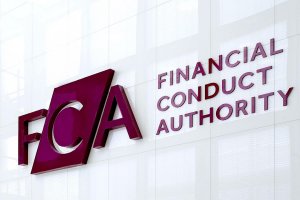Switzerland’s FINMA urges supervised institutions to address challenges of LIBOR replacement
FINMA has identified three main risk areas related to LIBOR replacement – legal risks, valuation risks and risks in relation to operational readiness.

The Swiss Financial Market Supervisory Authority (FINMA) has earlier today published guidance detailing the risks of a potential replacement of LIBOR.
The Swiss regulator reminds the public that the UK’s Financial Conduct Authority (FCA) has announced that it no longer intends to support the LIBOR benchmark interest rate from 2021 onwards. Alternative reference rates are therefore currently being discussed around the world – including in Switzerland. As alternatives to LIBOR, reference interest rates are currently being discussed around the world at national level.
In Switzerland too, a substantial contract volume – mainly comprised of mortgages and derivative contracts – is tied to LIBOR. The National Working Group on Swiss Franc Reference Rates (NWG) is the key forum for considering proposals to reform reference interest rates and replace LIBOR. The NWG has already established an important basis for replacing the Swiss franc LIBOR with the introduction of the Swiss Average Rate Overnight (SARON).
However, there are uncertainties and risks in Switzerland in connection with a potential replacement of LIBOR. FINMA has identified three main risk areas, in connection with the possible replacement of LIBOR. These are legal risks, valuation risks and risks in relation to operational readiness. Regarding legal risks, FINMA says that there are numerous contracts for financial products that reference LIBOR have a final maturity date after 2021. Amending these contracts to include practicable fallback clauses could help minimise potential legal risks. Active management of exposures in the context of LIBOR-based contracts and preparing for a transition to contracts based on alternative reference rates are important steps. But a transition of this kind requires that the alternative reference rates are based on a sufficient trading volume.
FINMA advises that, in order to ensure a seamless transition to equivalent products which are based on alternative reference rates, the supervised institutions should adopt a clear communication strategy towards their customers and counterparties. This will provide transparency and help reduce the likelihood of legal conflicts.
FINMA also notes that the high amount of receivables and payables in the area of derivatives and lending contracts that reference LIBOR result in valuation and basis risks. The alternative reference rates proposed in the context of national efforts are based solely on overnight rates, for example.
It is not currently possible to reliably predict the impact of LIBOR replacement on the valuation of LIBOR-based contracts and on corresponding hedge transactions. However, a quantitative analysis will reduce this uncertainty.
Another key factor in a possible replacement of LIBOR is ensuring from an operational point of view that products that are based on new reference rates can be used in practice. A timely assessment of operational readiness will help achieve a smoother transition to alternative reference rates. In this context, proper valuation, pricing and adequate risk management with regard to alternative reference rates are seen as key.
FINMA recommends that the supervised institutions address the challenges of a potential replacement of LIBOR in due course.
FINMA will pursue its supervisory activities in two ways. It will discuss the issue of the risks posed by a potential replacement of LIBOR in general with the supervised institutions and continue to support the NWG in its work. Also, from January 2019 onwards, FINMA will also contact supervised institutions that are particularly affected individually and in a risk-oriented manner. In particular, it will review the adequacy with which risks associated with a possible replacement of LIBOR are identified, limited and monitored.
In addition, FINMA will address the potential replacement of LIBOR within the Swiss Solvency Test (SST).









